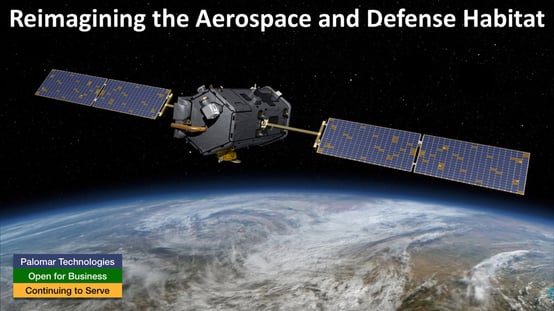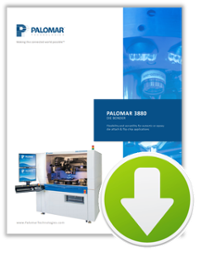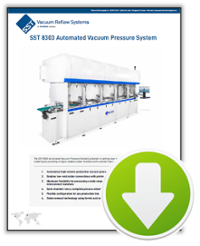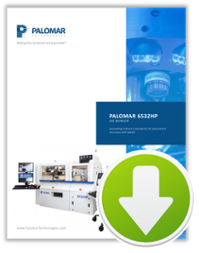“Defense companies are now facing a real crisis that they cannot afford to ignore. In every region of the world, defense ministries are revising their military capabilities and doctrines for the twenty-first century—and focusing on new technologies from non-aerospace and defense companies for complex weapons platforms and cybersecurity protection.”
Aerospace and Defense Trends in 2019, PwC.
“The U.S. Air Force has released the full, sweeping vision … that proposes to disrupt modern norms for the services… military acquisition policy and industrial participation.”
Aviation Weekly, January 28, 2020.
“To … improve production yields, defense companies should leverage highly agile production that adapts to changes in demand, including digital technologies. For instance, adopting smart factory initiatives could drive 10–12 percent gains in factory utilization and labor productivity without major capital investment.”
2020 Global Aerospace and Defense Industry Outlook, Deloitte.
“While for some types of businesses the effect of the pandemic will be very pronounced in the short term, for others the effects may take more time to manifest. The latter is especially true for industries that are exposed to a large number of externalities – political, economic, and social. The defense industry falls into this category.”
The Diplomat, March 27, 2020.
These quotes underscore the fact that profound changes were already occurring within aerospace and defense before the outbreak of the coronavirus pandemic. From global thought-leaders to military commanders to industry analysts to politicians the talk had been of significant and wide-ranging shifts. Reviewing various articles keywords stand-out such as “technology”, “great power competition”, “military strategies”, “procurement”, “magnitude”, “commercial parameters”, “market porosity”, “inflection point”, “priorities”, “high-tech style investment”, “competition” and “ecosystem convergence”. In short, the nature and aims of national military strategies, the blurring of lines with non-traditional suppliers, commercial behaviors and the overall context of activity were already moving into uncharted territories. This is now amplified.
Of these various commentaries, perhaps the most important conclusion is the suggestion that before COVID-19 the ecosystem currently was in a tension between two ellipsis points (1) traditional attitudes and perhaps passive attitudes towards long-term undulations in defense demand and (2) a proactive and, in some cases, a radical departure from traditional aerospace and defense outlook. The first is rooted in the practical realities of the past two decades where military spending has shown little real growth. This has created a low investment, low growth, a commercially skewed attitude which, against the backdrop of increasingly dominant high-growth business behaviors looks increasingly dated. The second ellipsis is one of bold change. Even before the pandemic, analysts had been anticipating a decade of step-change in the approach to national defense strategies and a step-change in the way governments procure to meet those strategies. Again, the profound impact on—and global response to—COVID-19 will significantly exacerbate this trend. The result promises a reorientation of the entire defense ecosystem requiring even the most conservative companies to undertake significant step-changes in practice. The underlying currents are not new, however.
Rather than being interpreted as a sudden upheaval, these changes are more truly the surfacing of hitherto subterranean trends within the ecosystem. A big factor here has been the maturing influence and convergence of new and not-so-recent entrants into the market place; billion-dollar players like Space X but also some much smaller companies have carved out a niche within defense based on very high levels of innovation and specialism. The inflection point is that global defense departments are now proactively—even aggressively— widening their orbit to include cutting-edge technologies from non-traditional defense partners. In its analysis of these trends Price Waterhouse Coopers (PwC) argues that the new ethos is summed up in the words, “disruption” “technology” and “fluidity”. Apart from consensus, these changes are underscored by a large amount of venture capital flowing into this “non-traditional” sector; over $10 billion in 2019 alone.
National governments have been strongly pushing this agenda. In the US for example, President Trump established The Office of the Under Secretary of Defense for Acquisition and Sustainment with the specific intent of streamlining business processes to speed capability for defense delivery and maximize value for the taxpayer; to use the department’s terminology “reinvent acquisition.” This remit includes being more commercial robust, rooting out waste, pushing innovation, cultivating more critical attitudes, adopting “creative compliance” and removing roadblocks to greater competition. Again COVID-19 has quickened these trends. Governments have cut “red-tape” and defense companies have responded with swift redirection of research, design and manufacturing capabilities, for example in the production of ventilators and infrared devices. For the medium-term core demand is expected to grow and diversity across the sector. New areas of demand will bring new opportunities and challenges for vendors to engage in.
That China will be the first country to emerge from the crisis presents that nation with unique opportunities both to lead the globe out of potential recession (as it did in 2008) and do what any commercially minded company would do, take a lead over the competition. Supply chains have become far more interconnected since 2008 so demand from China will feed through to Western suppliers. In terms of defense, the new investment across the globe as wider needs for civil support, medical-security and more becomes increasingly apparent. The re-occurrence of this or another pandemic is now taken as a real threat that is being met with new contingency plans.
With preparedness and swift response now key, the Palomar Group including Palomar Technologies and SST Vacuum Reflow Systems have heightened engagement with our customers through our sales teams, Assembly Services, and Innovation Centers to ensure that our organization is fit-for-purpose to meet their needs; sufficiently agile to meet evolving ecosystem demands. As communicated in our previous blog, Palomar is a key supplier to the critical infrastructure sectors of the United States. Our confidence—and our customers’ assurance—rests on four decades of mature and mutually beneficial relationships, design and supply. With a presence in Germany, Singapore, and the United Kingdom and our Headquarters here in the United States we have developed proven abilities to function effectively across big changes in global politics and economic crises, changing governments and cultures; traits essential in servicing today’s military and security assets. Rest assured, our company continues to work to serve the defense, medical, communications, photonics, and microelectronics industries’ needs while keeping our employees safe.
Further Reading:
"Aerospace and Defense Trends 2019", PwC.
“U.S. Air Force Defines Radical Vision for Command and Control”, Aviation Weekly, January 28, 2020.
"2020 Global Aerospace and Defense Industry Outlook", Deloitte.
"How COVID-19 Will Impact the Defense Industry", The Diplomat, March 27, 2020.
| Palomar 3880 Die Bonder Brochure | SST 8303 Automated Vacuum Pressure System Brochure | Palomar 6532HP Die Bonder Brochure |
 |
 |
 |
----
Dr. Anthony O'Sullivan
Palomar Technologies
Strategic Market Research Specialist